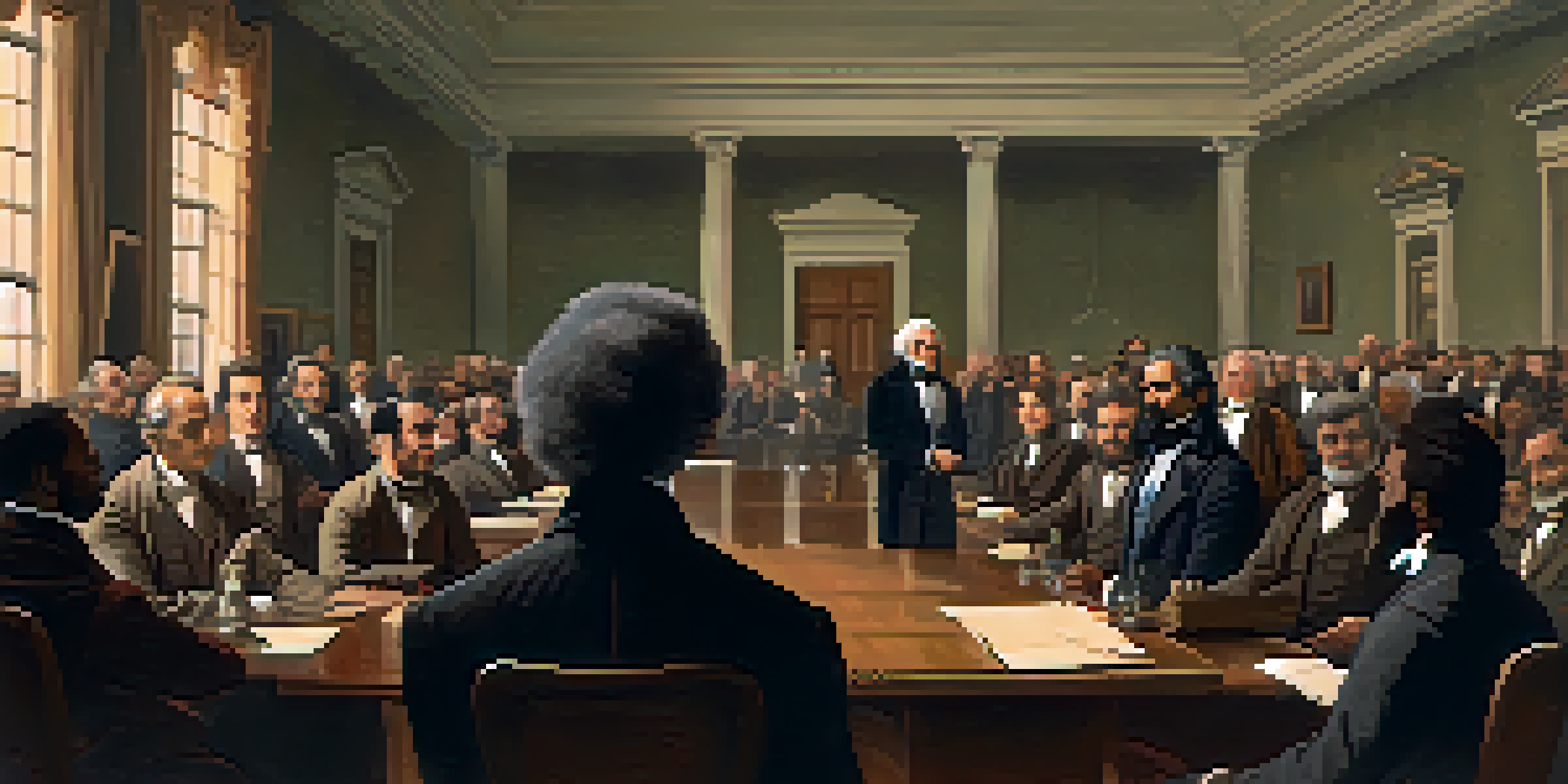New York State and the Civil Rights Movement: A Timeline

Early Influences: The Abolitionist Movement in New York (1800s)
In the early 19th century, New York emerged as a hub for the abolitionist movement, with many activists advocating for the end of slavery. Figures like Frederick Douglass and Sojourner Truth gave powerful speeches, drawing attention to the injustices faced by African Americans. Their work laid the groundwork for future civil rights efforts, exemplifying how New Yorkers were beginning to challenge societal norms. The abolitionist movement not only galvanized support for the end of slavery but also ignited conversations about equality and justice that would resonate for generations.
The Birth of NAACP: A New York Initiative (1909)
The National Association for the Advancement of Colored People (NAACP) was founded in New York City in 1909, marking a significant step towards organized civil rights advocacy. This group sought to address racial discrimination and promote civil rights through legal means, education, and activism. The NAACP's New York chapter became one of the most influential branches, spearheading campaigns against lynching and segregation. Its establishment highlighted the city's role as a critical battleground for civil rights, setting the stage for more widespread activism.
Abolitionists Shaped Equality Efforts
Activists like Frederick Douglass and Sojourner Truth in early 19th century New York laid the groundwork for civil rights by challenging societal norms and advocating for the end of slavery.
Harlem Renaissance: Culture Meets Activism (1920s)
The Harlem Renaissance of the 1920s was a cultural explosion that celebrated African American art, literature, and music, significantly impacting the civil rights movement. Artists like Langston Hughes and Zora Neale Hurston used their platforms to express both the joys and struggles of Black life in America. This cultural movement fostered a sense of pride and community, inspiring many to fight for civil rights. As Harlem became a center for Black intellectual thought, it also attracted national attention to the injustices faced by African Americans.
The Brown v. Board of Education Decision (1954)
The landmark Supreme Court case Brown v. Board of Education, which declared racial segregation in public schools unconstitutional, had profound implications in New York. Although New York had fewer segregated schools than many southern states, the ruling energized local civil rights activists to push for equality in education. Parents and students rallied for school reforms, leading to increased awareness of educational disparities. This case exemplified how national legal decisions could inspire grassroots movements at the state level.
Harlem Renaissance Fueled Activism
The cultural explosion of the Harlem Renaissance in the 1920s inspired a sense of pride and community among African Americans, driving many to engage in the fight for civil rights.
Civil Rights Marches and Protests in NYC (1960s)
The 1960s saw an uptick in civil rights marches and protests throughout New York City, as activists sought to combat systemic racism. Events like the 1964 Harlem riot highlighted the frustration with socio-economic conditions facing African Americans. The city became a focal point for demonstrations advocating for voting rights and fair housing. These marches not only drew attention to local issues but also aligned New York with the broader national civil rights movement.
Martin Luther King Jr.'s Influence in New York (1960s)
Dr. Martin Luther King Jr. visited New York City multiple times during the 1960s, inspiring countless individuals to join the civil rights movement. His speeches and public appearances energized activists, emphasizing the importance of nonviolence and unity. King’s presence in the city helped to bolster efforts for desegregation and equality, making it clear that New York was an integral part of the national struggle. His message resonated deeply, encouraging people from all walks of life to fight for justice.
Modern Movements Persist in NYC
In the 21st century, initiatives like Black Lives Matter highlight New York's ongoing role as a critical battleground for combating racial inequality and advocating for social justice.
The Stonewall Riots: Intersection of Civil Rights (1969)
The Stonewall Riots in 1969 marked a pivotal moment not only for LGBTQ+ rights but also for the broader civil rights movement in New York. The uprising against police brutality at the Stonewall Inn brought attention to the discrimination faced by LGBTQ+ individuals, highlighting the intersectionality of civil rights struggles. Activists from various backgrounds united, showing that the fight for equality encompasses multiple identities. This event catalyzed activism and laid the groundwork for future movements advocating for diverse rights.
Modern Civil Rights: Continuing the Fight in New York (21st Century)
In the 21st century, New York continues to be a key player in the civil rights movement, with ongoing efforts to combat racial inequality and social injustice. Movements like Black Lives Matter have gained significant traction, mobilizing thousands to advocate for police reform and racial equity. The city has hosted numerous protests and discussions focused on systemic racism, highlighting its role as a platform for change. As history shows, New York remains a vital arena for civil rights activism, adapting to new challenges while striving for equality.